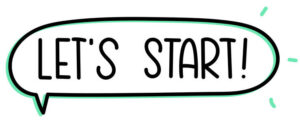 Kris English, PhD
Kris English, PhD
Professor Emeritus of Audiology
The University of Akron
Virtually every book and article on counseling and patient-centered care identifies empathy as an essential clinician characteristic. Given its importance, audiology students might harbor doubts about their ability to convey empathy. It’s certainly a concern shared by other healthcare trainees, who report worries about appearing unprofessional and feeling uncomfortable, vulnerable, and insecure (“what if I say the wrong thing?”)(Aper et al, 2015; Costa-Drolon et al, 2021; Plotkin & Shochet, 2018).
These “empathy qualms” are legitimate concerns for new clinicians, not taboo topics. Not addressing them could add even more pressure. Fortunately, recent articles on empathy in healthcare provide a platform to help students consider the topic from different angles, and find some guidance about their qualms.
Following are four suggestions for discussion, plus a comfortable starting point.
1. What does “clinical empathy” actually mean?
A popular assumption about empathy is reflected in a 2020 article in the New York Times, which describes passively experiencing another person’s pain or anguish. However, when the intention is to be person-centered, passive empathy is insufficient (Hall et al, 2021). Patients cannot perceive passive empathy, and could easily assume their clinician has none at all.
In comparison, a more meaningful definition for empathy is offered by Bas-Sarmiento et al. (2020): “the ability to perceive the feelings of another and to communicate that understanding, helping them to feel understood.” Question: why is it important to help patients feel understood?
2. Why might “helping patients feel understood” be described as “hard work” and “emotional labor”?
Ask students to read Cameron et al. (2019) and/or Vinson and Underman (2020) and develop a discussion question for their peers (see Reference section below). For example, what are the cognitive costs of empathy and how should we handle them? Why might our choice be empathy avoidance? What are the costs of emotional labor? How do we manage this effort?
 3. Is there a risk of being overwhelmed by empathy?
3. Is there a risk of being overwhelmed by empathy?
It’s likely many students worry about this risk. To broach this topic, ask students to read and discuss this essay. For instance, how are empathy and self-care intricately interdependent?
4. How to address empathy dissonance and empathy inauthenticity?
Students might assume that because they lack similar life experiences, they will have limited ability to empathize with patients. But are shared life experiences really necessary? Ask students to read Laughey et. (2020) and/or Veen (2021) for insights. For instance, does this quote apply to audiology? “Sartre describes inauthenticity as a person not embodying or ‘owning’ the situation they are in. He describes a waiter on a terrace who has the performance and attitude of a waiter, without being a waiter” (Veen, 2021, p. 142). Compare to this observation: “If empathy is viewed simply as a performance rather than as a deeply held commitment, there is a risk that it may become limited to patients similar to oneself rather than to all patients” (Jeffrey & Downey, 2016, p. 108). How to convey our personal “deeply held commitment” to all patients, even when we have little in common?

And Finally: A Comfortable Starting Point
As mentioned above, a likely self-doubt students might hold could be, “What if I say the wrong thing?” An evidence-based strategy to address this worry is to prioritize nonverbal communication. Given the option, students indicate they prefer “nonverbals” anyway (Laughey et al, 2020), and more importantly, patients perceive body language and other nonverbal empathic behaviors as more authentic than verbal statements (Plotkin & Shochet, 2018). Discussion items: What does nonverbal empathy look like, and what have students noticed when they’ve observed it? Why might patients find it authentic? Are some “nonverbals” more comfortable or feel more natural than others?
Developing communication skills that convey empathy can be a daunting challenge. Supporting small steps to help students increase their confidence seems worth the effort.
References
Aper L et al. (2015). ‘‘Should I prioritize medical problem solving or attentive listening?” The dilemmas and challenges that medical students experience when learning to conduct consultations. Patient Education and Counseling, 98, 77-84.
Cameron CD et al. (2019, April 18). Empathy Is hard work: People choose to avoid empathy because of Its cognitive costs. Journal of Experimental Psychology. Advance online publication. http://dx.doi.org/10.1037/xge0000595
Costa-Drolon E et al. (2021). Medical students’ perspectives on empathy: A systematic review and metasynthesis. Academic Medicine, 96(1), 142-154.
Hall J et al, (2021). What is clinical empathy? Perspectives of community members, university students, cancer patients, and physicians. Patient Education and Counseling, 104, 1237-1245.
Jeffrey D, Downie R. (2016). Empathy: Can it be taught? Journal of Royal College of Physicians of Edinburgh, 46, 107–12 http://dx.doi.org/10.4997/JRCPE.2016.210
Laughey W. et al. (2020). ‘I’m sorry to hear that’—Empathy and empathic dissonance: The perspectives of PA students. Medical Science Educator, 30, 955–964. https://doi.org/10.1007/s40670-020-00979-0
Plotkin J, Shochet R. (2018). Beyond words: What can help first year medical students practice effective empathic communication? Patient Education and Counseling, 101, 2005-2010.
Veen M. (2021). Wrestling with (in)authenticity. Perspectives in Medical Education, 10,141–144. https://doi.org/10.1007/s40037-021-00656-x
Vinson A, Underman K. (2020). Clinical empathy as emotional labor in medical work. Social Science and Medicine, 251, 112904.
